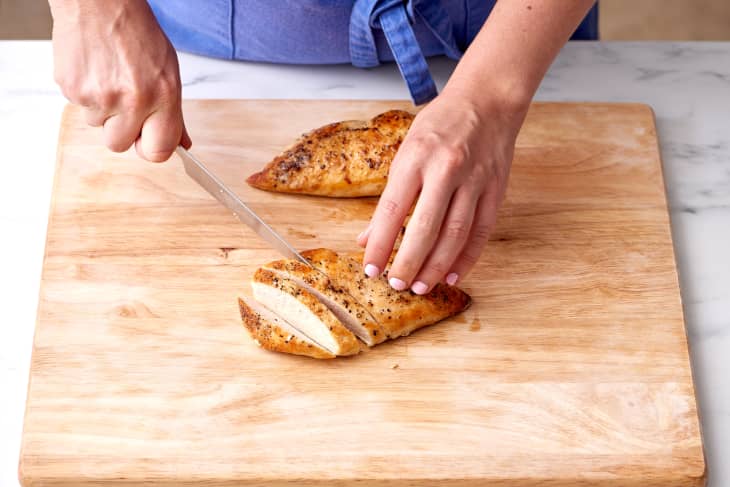The Biggest Mistake You Might Be Making with Your Wood Cutting Boards
Who among us hasn’t pulled out a wooden cutting board from the cabinet, only to find it wobbly, slightly unstable, and warped? It happens to the best of us — professionals and home cooks alike. Of course, you can keep using it in that state (until no amount of damp kitchen towels under the board can hold it steady!). Again, it happens. But there is one key thing you can do to keep it from happening in the first place.
Although important, I’m not talking about oiling your wood cutting boards. I’m also not talking about how you wash it. (But seriously, don’t put it in the dishwasher!) What am I talking about then? How you dry it.
Once you’ve hand-washed your cutting board, you should dry the board with a clean kitchen towel to remove as much moisture as possible. Next, and this is the part that is so easy to do but often goes overlooked, dry it standing up on its edge. That’s right — you should never lay the board down while it’s drying.
The logic is simple: Wood absorbs moisture. It’s the nature of … well, nature. Depending on how oiled your board is, it could be a little bit of water or it could be much more. “Wood is a breathable material that expands and contracts in response to moisture content and atmospheric conditions,” says Mandy Cook of the highly regarded cutting board maker John Boos & Co. “It is important to dry your cutting board on its edge to allow airflow and to rid board of excess moisture because wood is a breathable material.”
By standing the board on its edge, you are allowing the broadest section of the board to air dry as quickly and as evenly as possible. Did you hear that? Evenly. This prevents one side from drying faster than the other side, which would open the door to shrinkage or cupping of the wood on the drier side. Simple, right?
Here’s the exciting news: If you happen to have a warped board right now, never fear. Our new best friend Mandy knows just how to fix it! “To remedy a warped board, liberally apply Boos Mystery Oil to all surfaces and cover with plastic wrap to hold in the oil. Apply weight to the bulged surface (like a bag of sugar or flour) and let it sit on a flat surface (would not recommend a cold surface like granite or concrete). Let the oil soak into the wood fibers and the board will acclimate to its environment. It will retain its original flat form after a week or so. Unwrap, lightly oil the entire board, wipe dry with a paper towel, and store the board on its edge until it is completely dry.” Isn’t that the best news you have heard in a long while? And remember: The next time you wash your board, stand it up on its edge.
